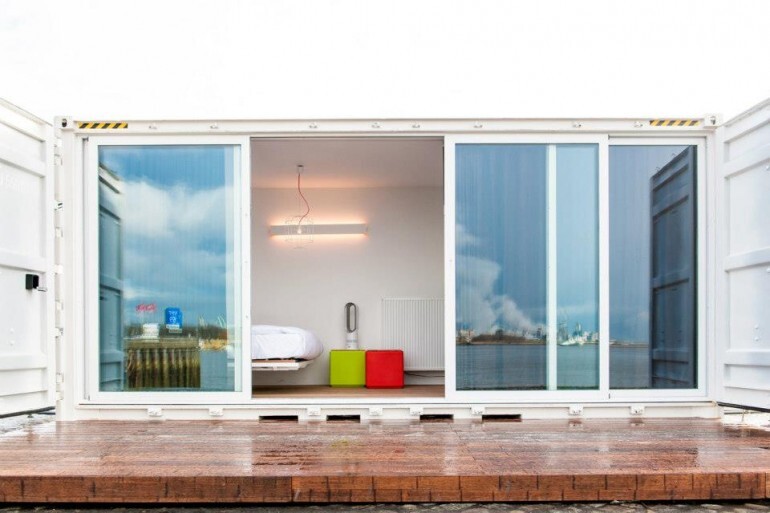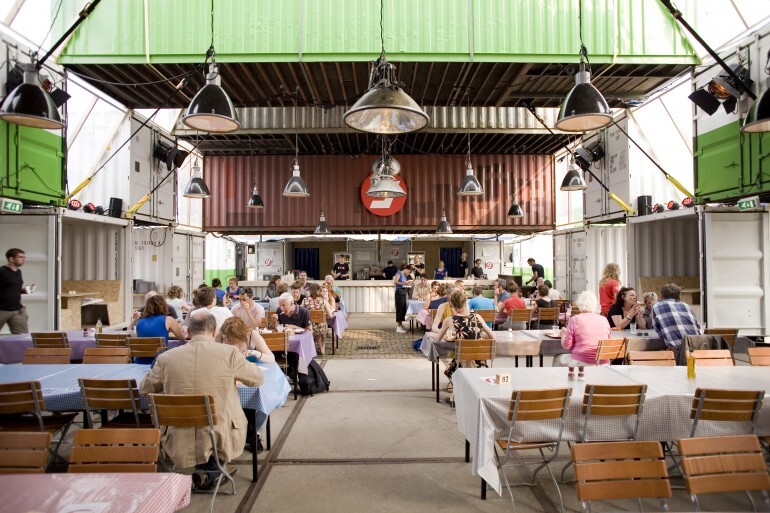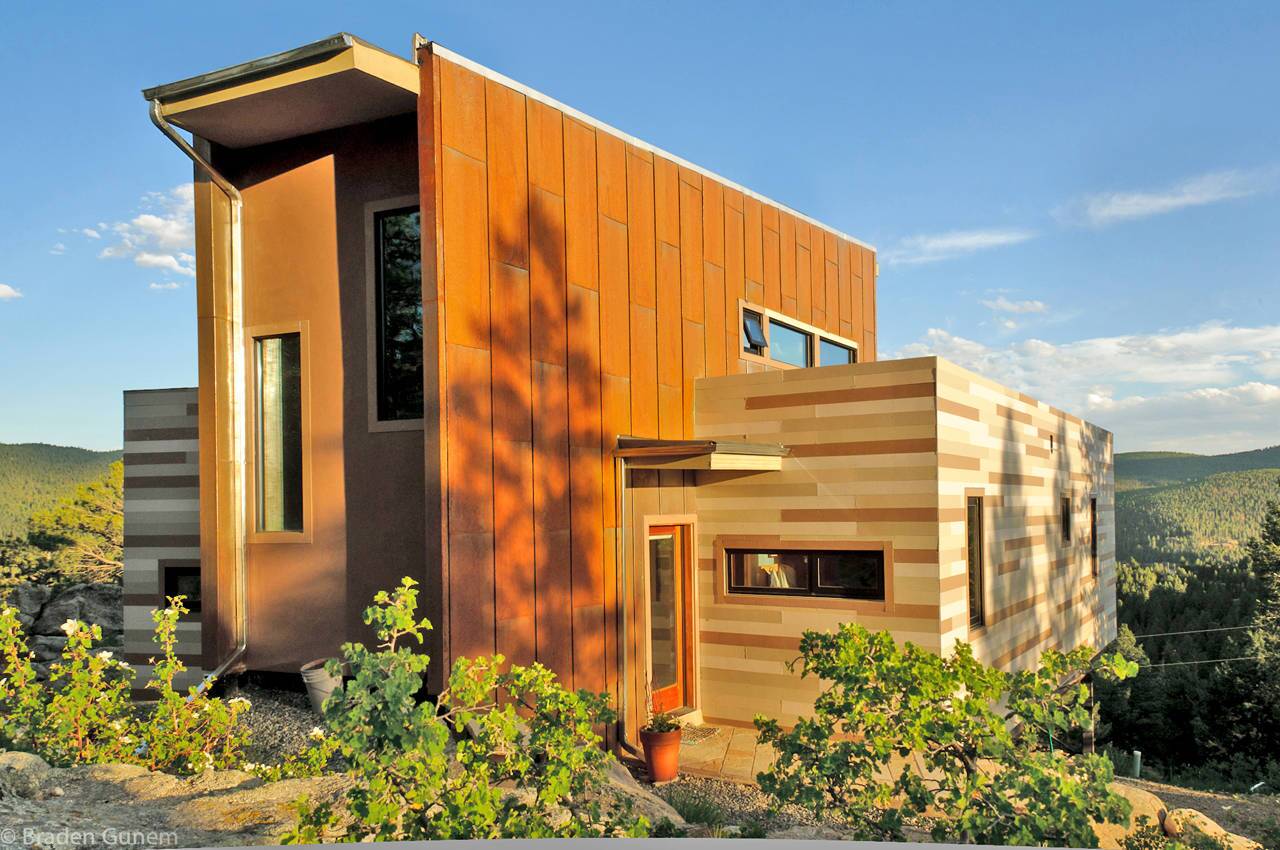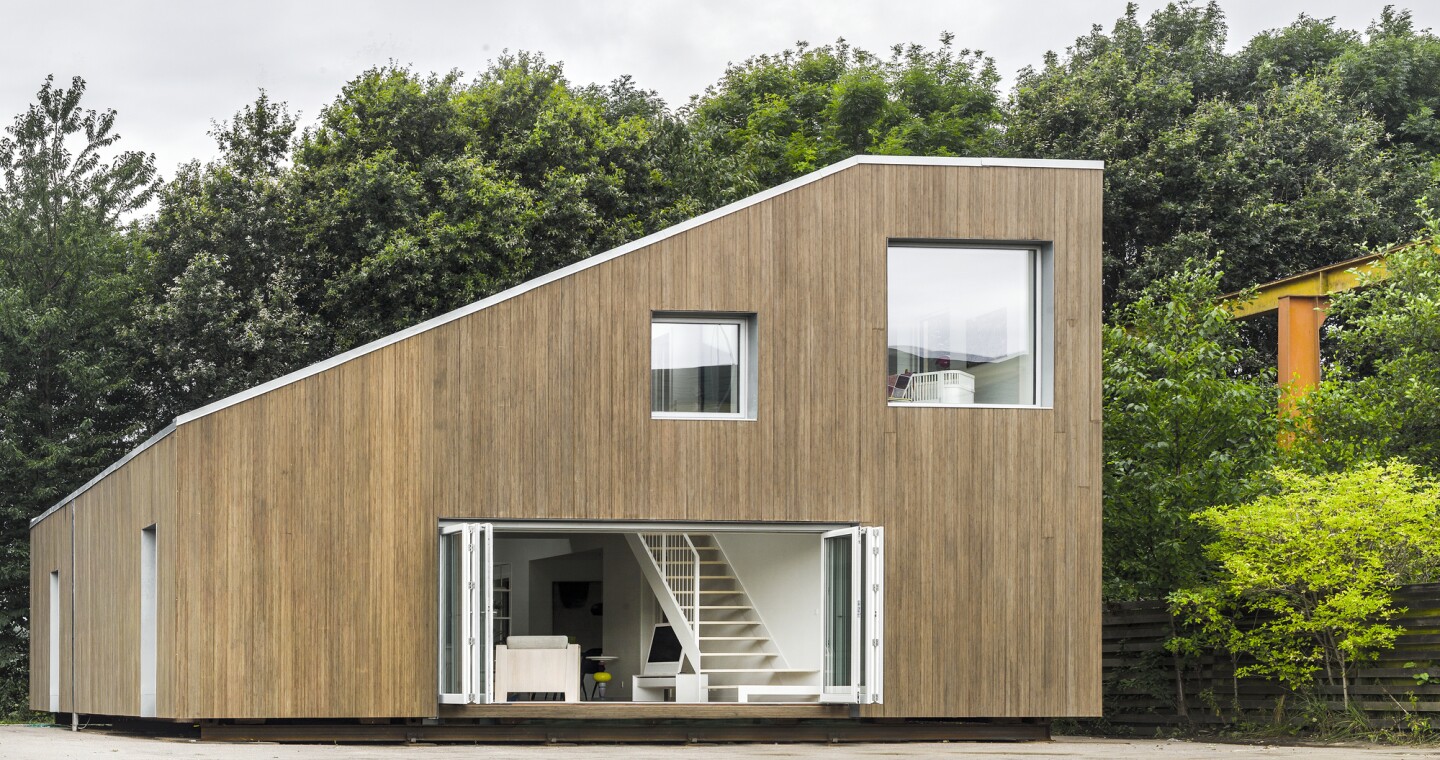The widespread use of the modern metal shipping container can be traced back to the mid-1950's. According to Marc Levinson, in April 1956 an oil tanker traveled between Newark and Houston with 58 rudimentary "shipping containers," (actually refitted aluminum truck bodies) sparking a modern revolution in moving goods around the world. However, an unexpected result also eventually transpired: shipping containers became recognized as an attractive building material by many architects. Gizmag gives a nod to ten of our favorite uses of shipping containers in architecture.
Large numbers of shipping containers are manufactured each year, transported to far-flung ports, and frequently discarded. These unwanted shells can be purchased relatively cheaply and given a new lease of life. Doing so can pose significant challenges, however, such as dealing with solar heat gain, ensuring adequate insulation, and overcoming safety concerns. But there's a definite argument for their continued use, as highlighted by the selection of shipping container-based architectural projects below.
Caterpillar House

Located near Chile's capital Santiago, Caterpillar House, by Chilean architect Sebastián Irarrázaval, is a shipping container-based family residence that boasts views of the local Andes Mountains. The Andes also handily help reduce energy costs, as the cold air which passes down from the mountains is utilized as a form of passive-cooling, seeping through a ventilated facade and carefully arranged windows to cool the inside.
Caterpillar house was completed in 2012, measures 350 sq m (3,800 sq ft), and comprises a total of 12 shipping containers which provide bedrooms, living quarters, and even a swimming pool.
Sleeping Around

Belgian-based outfit Sleeping Around uses shipping containers as a basis for a portable hotel. The Sleeping Around B&B features six container units in all, with four of them tasked as guest rooms, and the remainder serving as breakfast and lounge area, and sauna room, respectively. Since it's based on shipping containers, the hotel can be moved to different locations with relative ease (it's currently based in Antwerp).
Happily, the hotel is more involved than simply throwing some beds in some spare containers, and each 20-ft (6-m) long guest room looks quite well-equipped, with bed, iPod docking station, air-conditioning, and a bathroom area with toilet and shower.
A night's sleep in the hotel will set you back from €149 (roughly US$200), and more information can be found on the company's website.
O+A's temporary shipping container "city"

Earlier this year, architectural firm O+A produced a temporary shipping container "city" for the 20th anniversary of Amsterdam's annual avant-garde theater festival, the Over het IJ Festival.
O+A stacked the shipping containers in order to create a courtyard which served as both restaurant area, and theatrical stage. The interiors of some of the containers were also designated dining rooms and given the necessary furniture.
The entire structure took four days to build, lasted for two weeks of festival fun, and took only two days to disassemble, perhaps providing a good argument for the efficacy of similar future events.
New Jerusalem Orphanage

4D and A Architects used a total of 28 shipping containers, some measuring 6 x 2.5 m (20 x 8 ft) and some measuring 12 x 2.5 m (40 x 8 ft), to transform an existing brick-built orphanage at Gauteng, South Africa. The New Jerusalem Orphanage was completed in December, 2011, and uses careful layout, timber screens, and roof garden, in addition to standard insulation, to help maintain a more comfortable temperature inside the containers.
Additionally, the orphanage was fitted with a solar thermal and photovoltaic electricity system, and the containers were raised on plinths to facilitate airflow. The original building's sleeping quarters were also converted into a new kitchen and dining room. While this project could easily have turned into a grim metal-boxed nightmare, the orphanage is colorful, and filled with light.
Bharathi Antarctic research station

The Bharathi Indian Polar Station, India's third permanent base in Antarctica, was constructed using 134 shipping containers, which were interlocked and set on stilts. In order to allow the resident scientists to work in extreme weather conditions, which include wind gusts of 200 mph (321 km/h), and temperatures reaching minus 40°F (- 40°C), an insulated skin and outer shell were also adopted.
The station sports everything required to allow the scientists to conduct their work in safety, and, due to its isolated location, is designed to be self-sufficient for long periods of time. The project clearly proves that with enough time and money, shipping containers can be outfitted to suit even the most extreme environment.
Bharathi measures a total of 2,500 sq m (27,000 sq ft), split over three floors, and was constructed by bof artchitekten earlier this year.
Starbucks Tukwila drive-thru store

When purveyor of "black gold" Starbucks decided it needed a new drive-thru store in Tukwila, WA, the design team tasked with the job found themselves inspired by the company-wide drive to recycle where possible. This resulted in a structure which based on four end-of-life-cycle shipping containers.
The Tukwila store measures 42 sq m (450 sq ft), is fully working and is also LEED certified – though we've no further details available on exactly what energy-reducing technologies were employed to receive LEED certification, nor what level it was awarded. Still, it's certainly an innovative use of containers, and a company rep told Gizmag that Starbucks is considering the possibility of expanding the design elsewhere.
Shipping Container House

Studio H:T's Shipping Container House is, as its name suggests, part-built from shipping containers. The home derives its energy solely from off-grid sources, including photovoltaic solar power, and a pellet stove for heating. The common blight of shipping container homes, solar heat gain, has been tackled with the addition of exterior cladding, and the property sports a green roof.
Shipping Container House is located in Colorado, and measures 140 sq m (1517 sq ft). The project was completed in 2010.
Atira Women’s Resource Society Housing Development

Canada's Atira Women's Resource Society recently commissioned a shipping container-based housing development project that provides access to safe and secure housing for up to 12 women at a time. Based on a standard city plot, and resembling an apartment block, the development comprises 12 self-contained units, each offering roughly 26 sq m (285 sq ft) of living space.
The end construction cost worked out at US$82,500 per unit, and this includes amenities such as en-suite laundry services.
WFH House

The WFH House, by Danish architectural studio Arcagency, incorporates recycled shipping containers into a modular building system that allows clients to take part in the design process themselves, and configure their own prefabricated home.
The home's layout is based around two rows of containers, which are stacked on top of each other to afford 180 sq m (1,937 sq ft) of space. WFH features an open living space, a kitchen, and four multi-purpose rooms that can be tasked as bedrooms, offices, or whatever else is required. The exterior sports a bamboo facade, and ample insulation has been added to the interior walls.
Infiniski shipping container houses

One of the primary benefits shipping container-based architecture brings to the table over more traditional building materials is the flexibility the metal boxes can offer. Infiniski clearly took this on board with its range of shipping container houses, which can be adapted as offices, hotels, and residential blocks.
Besides shipping containers, Infiniski also uses recycled railway tracks, forklift pallets, and old bottles in its designs, which can be employed worldwide at relatively low cost – one example given by the company was the Chile-based Manifesto House, which cost a total of €79,000 (US$105,000), including delivery.








































































































































